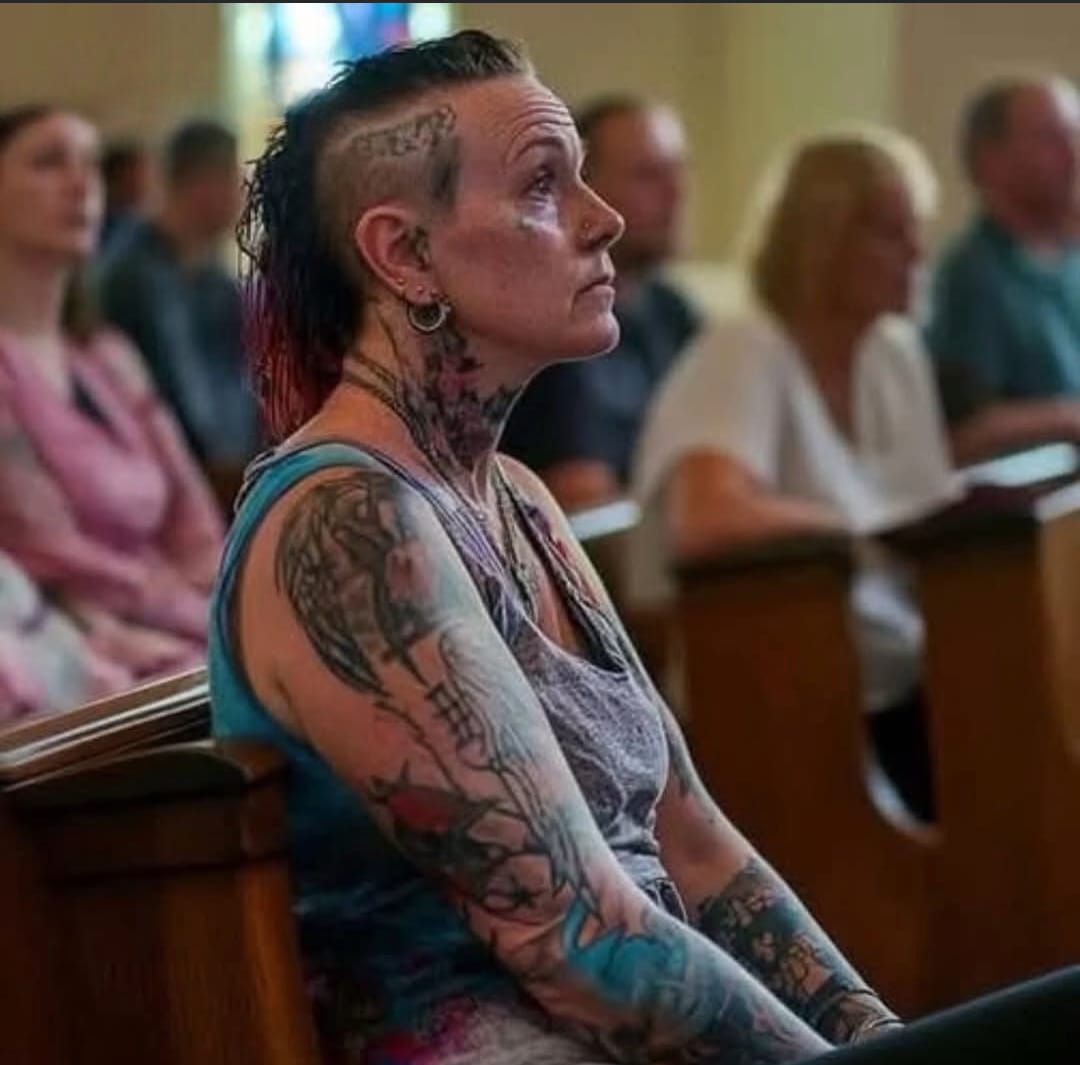Experiences on the journey of faith often challenge our preconceived notions about what it means to be a part of a spiritual community and what authentic worship looks like in today’s diverse religious world.
During a lively Sunday service, an awkward interaction led to a profound conversation about inclusion within faith groups. A long-time church member noticed a newcomer whose appearance, marked by numerous tattoos and piercings, seemed at odds with traditional ideas about church attire.
For many worshippers, sacred spaces have historically been places where certain dress codes reflect respect and reverence. This led the seasoned churchgoer to approach the tattooed individual after the service, suggesting that their appearance was not fitting for a worship setting.
The visitor’s response was straightforward but powerful: “My appearance is none of your business.”
This simple but insightful statement caused the church member to pause and reconsider. Was the discomfort genuinely a concern about spirituality, or was it more about old cultural norms? In today’s diverse spiritual communities, should we rethink what is considered appropriate attire for worship spaces where people come to deepen their faith?
Personal expression through body art has become more widespread across various age groups and backgrounds. When someone with visible tattoos walks into a religious service seeking spiritual growth, does their appearance decide whether they are accepted?
Some churchgoers argue that modest clothing shows the proper reverence for sacred spaces, while others believe that faith communities should prioritize acceptance and compassion, no matter what someone wears. After all, true spiritual practices often encourage us to look beyond outward appearances.
Each person who attends a religious service brings their own unique journey, and tattoos, piercings, or non-traditional attire often symbolize important moments in that person’s life—perhaps even parts of their spiritual evolution.
Religious communities must find the right balance: respecting traditional practices while fostering an inclusive atmosphere where individuals from all walks of life feel welcome. Houses of worship could consider encouraging attire that honors sacredness while also embracing personal expression.
At the heart of this is the idea that spiritual growth flourishes when people feel free to be themselves within their faith communities. This allows individuals to stay true to their unique identities while also respecting the traditions that have shaped the space they enter.
Many faith traditions emphasize the importance of acceptance, modeling inclusivity as seen in the teachings of spiritual leaders who welcomed those marginalized by society.
True spiritual development begins when we look beyond the surface and recognize the shared humanity in every person who seeks a connection with something greater than themselves.
